Authors: Dr. Chris Fouche and Mr. Mark Goodman, Aquaculture Research & Development, Department of Agriculture, Forestry & Fisheries.
In the South African marine aquaculture industry, Dusky Kob (Argyrosomusjaponicus) is currently considered to be the primary finfish species for commercial production. Traditional marine finfish production practices of pond and cage culture are largely restricted by environmental impacts, management control and biosecurity risk. Recirculating aquaculture systems (RAS), on the otherhand, is a relatively new technology designed for the intensive rearing of aquatic organisms.
In spite of traditional marine finfish production limitations, both pond and cage culture methods are currently being assessed in carefully selected localities in Mozambique and KwaZulu-Natal. While the water temperature in the latter area is apparently suitable for Dusky Kob production, a reduction in growth rate during winter has been observed with variable growth rates throughout the year.
RAS is almost completely independent from meteorological factors whilst also markedly improving risk management (Kazmierczak & Caffey 1995; Rawlinson 2002).
This increased level of control has led to key role players in the local industry employing RAS, and it is currently the most reliable and predictable commercial production option for tank-based cultivation of Dusky Kob.


















Comments are closed.